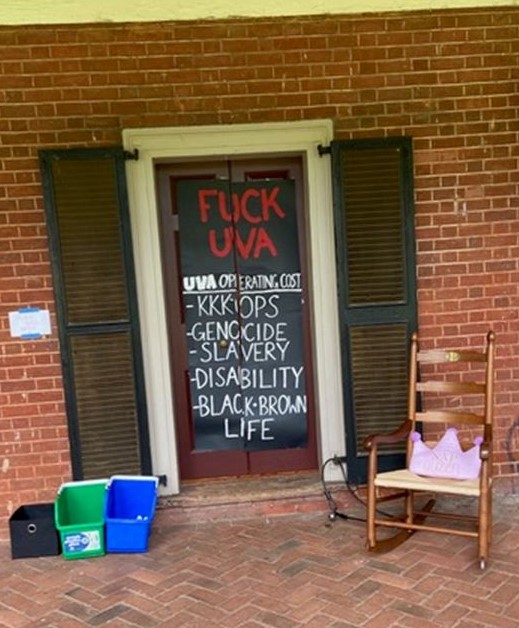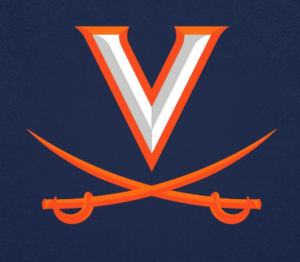A message addressed to “Friends of UVA” by Bert Ellis, class of 1975, is passing around virally by email. Reed Fawell posted the message in the comments on a previous post but did not mention Ellis by name. Given the fact that Ellis is a prominent and wealthy alumnus — he is CEO of Ellis Capital — his opinions matter. I am republishing his open letter on the blog because everyone needs to see what has become of “Mr. Jefferson’s University.” — JAB
This is a sign posted on a Lawn Room door right now. It has been up like this for about 2 weeks. I sent the picture to President Ryan a week ago and asked if the University was going to permit such a sign to stay up on such a public place as the Lawn. I told President Ryan that I absolutely support this student’s right to his/her political opinions and hir/her right to express them on his/her Lawn Room door but not the profanity. Ryan responded immediately and told me “We’re working on it”.







